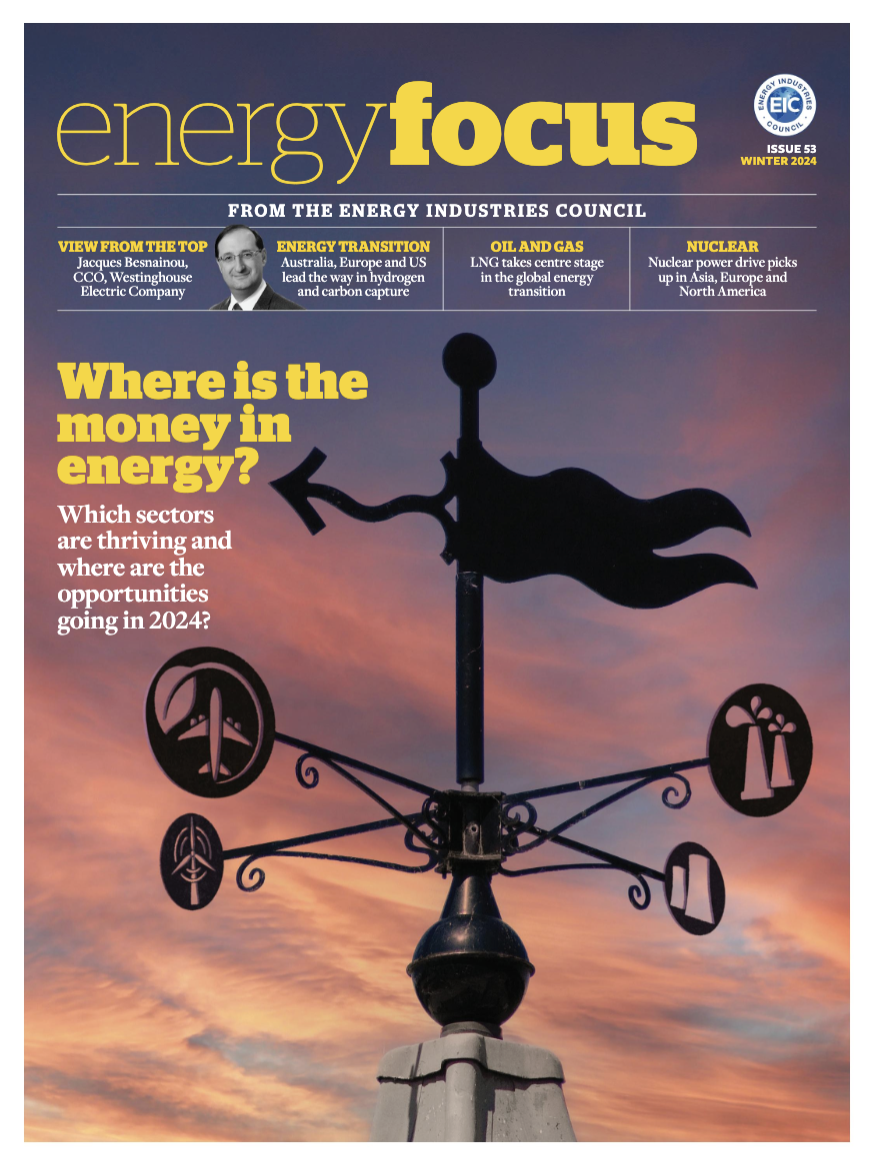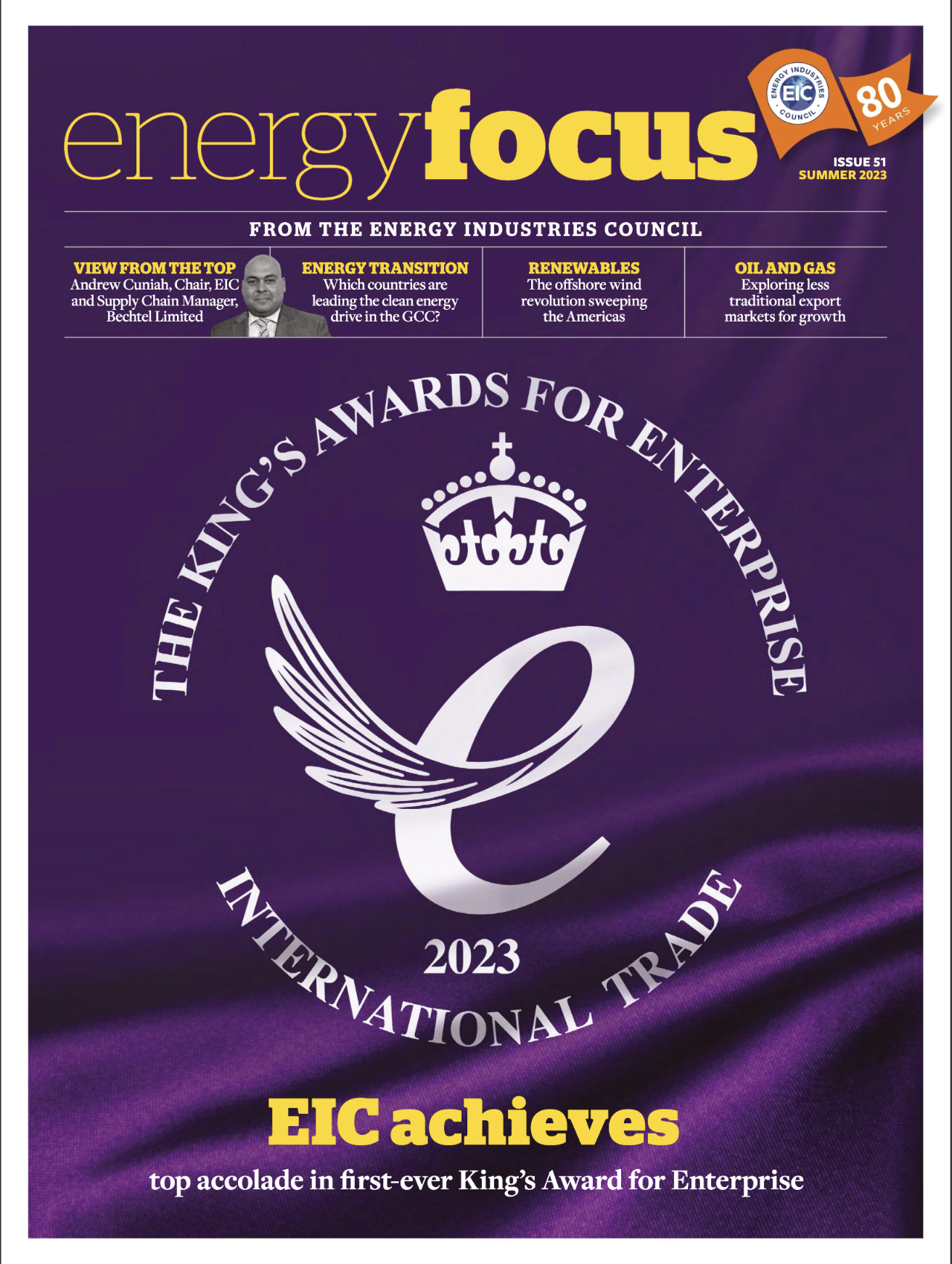The Internet of Things goes offshore
The IoT revolution and new communication protocols offer huge opportunities for offshore platforms, writes Ian Phillips at the Oil & Gas Innovation Centre.

In the last 12 months, the potential of the Internet of Things (IoT) to benefit the oil and gas industry has been accelerated with the arrival of 4G technology offshore. With the agility to adopt new technologies, and the ability to collect and assess big data and communicate offshore analysis and results in real time, 4G is bridging the last few metres from control room to the live plant. IoT devices are now a more accessible and viable resource to develop alternative solutions for industry challenges.
At the Oil & Gas Innovation Centre (OGIC), we are seeing a marked increase in enquiries from transformative technology driven companies requiring funding and support to develop new IoT enabled technologies for the sector. The industry is clearly trying to capitalise on the IoT revolution and a range of low-power communication technologies for offshore platforms are already being utilised.
Many of these IoT technologies are proving effective at alerting operators to potential issues before they become critical to operations, by enabling continuous real-time monitoring of offshore assets, such as structural steelwork, complex pipework systems and previously ‘dumb’ process equipment.
Seizing the 4G opportunity
With the advancement of 4G offshore, large volumes of data collected across operational activities can be transferred from offshore to onshore, enabling more robust decision-making and more effective and timely action plans. This is helping to reduce the potential for complete failure and minimising the risk of costly downtime. Accordingly, operators can achieve better control of their activities and costs, and potentially even prolong an asset’s lifecycle.
Indeed, as highlighted in McKinsey & Company’s August 2016 report, The Next Frontier for Digital Technologies in Oil and Gas, CAPEX could be reduced by as much as 20% and upstream operating costs could be cut by 3 to 5%.
The research indicates that reduced CAPEX and OPEX will be achieved through the effective use of new digital technologies, which can offer improved data and unprecedented insights into end-to-end operations. This will provide the necessary intelligence to support better strategic decisions and enable increased agility to respond to identified issues, as well as opportunities for improved performance.
Putting IoT to work
Sensor technology has been a key feature of IoT-enabled solutions for the sector. One of our recent collaborative projects involved a smart infrastructure business that has developed a technology incorporating state-of-the-art visual light and environment sensors that collect data on the patterns of fixed and movable assets. Using predictive analytics, this data can be converted into actionable knowledge that can increase asset utilisation, reducing energy and maintenance costs.
Another OGIC-facilitated collaboration with RAB Microfluidics and the University of Aberdeen shows how IoT technology can help to improve processes and drive optimal efficiency .
RAB Microfluidics has developed cutting-edge ‘lab-on-a-chip’ technology with the ability to deliver oil conditioning monitoring (OCM) chemical analysis 1,000 times faster than current OCM techniques. In addition, this technology is 10 times cheaper to apply, and offers continuous monitoring in real-time. This allows for earlier problem diagnosis, faster decision-making and enhanced reliability, resulting in greater efficiency and cost savings.
The breadth of technologies entering the market gives a strong indication of the direction that the industry is moving, and shows the real possibilities of IoT to solve industry challenges and improve current operations – most notably offshore.
Undoubtedly, support for IoT is being driven by the benefits that these technologies can provide, such as cost savings through more efficient processes, and the ability to rapidly collect, store and analyse vast amounts of operational information for real-time decision-making.
WHAT IS…?
Internet of Things (IoT)
At its core, IoT is simple: it’s about connecting machines, devices and objects (with embedded sensors) to the Internet. The IoT is a giant network of connected things and people – all of which are able to collect and exchange data about the way they are used and about the environment around them.
4G
4G cellular connectivity is being used to put the IoT to work. The fourth generation of mobile phone wireless technology, 4G builds on the existing 3G mobile technology but does everything at a much faster speed. With a ceaseless flow of wireless traffic, connecting the IoT requires anywhere, anytime networking that is completely flexible and scalable. Using 4G for IoT deployments delivers this, while also keeping the enterprise network secure.
Smart infrastructure
Smart infrastructure is the result of combining physical infrastructure with digital technology, providing improved information to enable better decision making, faster and cheaper. Smart infrastructure will allow owners and operators to increase capacity, efficiency, reliability and resilience.
Bringing the new era to the North Sea
While there is a raft of new technologies becoming available for the sector, much of the North Sea is still hard wired and pre-Internet. The current infrastructure of the North Sea has posed challenges for those keen to apply IoT to their operations. The arrival of 4G infrastructure offshore changes this dramatically.
In addition, due to the age of the North Sea, practical challenges exist, such as who owns the collective big data; what skills are needed to turn data into information; and how securely is data being stored between organisations.
Success with IoT will require a consideration of the optimal balance between technology and humans. With the almost real-time transfer of data between offshore and onshore, all aspects of the business will need to become more integrated and investment in training to maximise the benefits of digitalisation is essential. It is also vital to have an understanding of what data needs to be collected, rather than collecting all data because the technology provides this capability.
Revolutionary technologies are already creating value for the sector. The big wins will come from those who are open to thinking differently about technology’s role in business operations and are willing to utilise IoT to drive the industry forward.
By Ian Phillips, Chief Executive Officer, Oil & Gas Innovation Centre






Follow us
Advertise
Free e-Newsletter